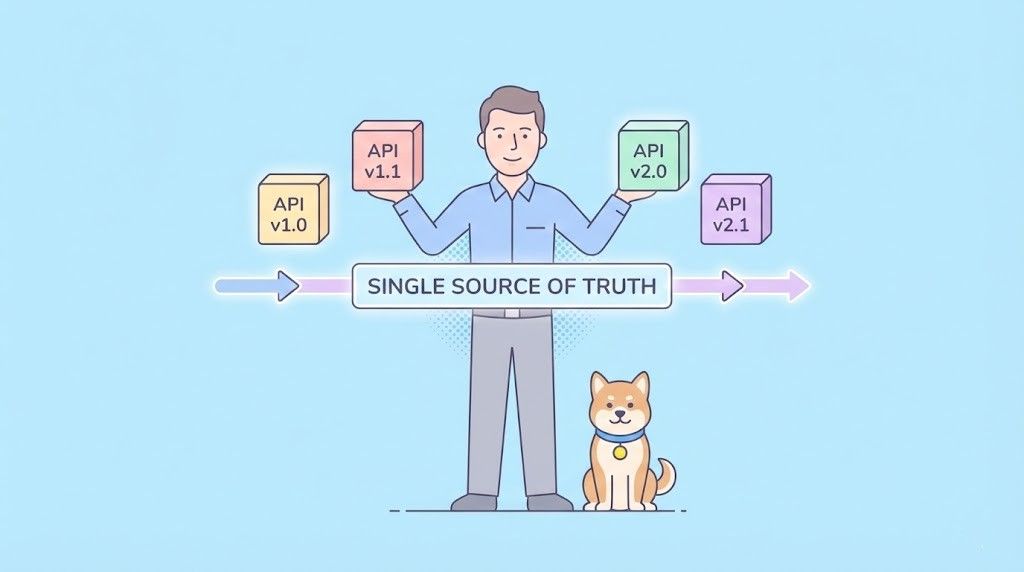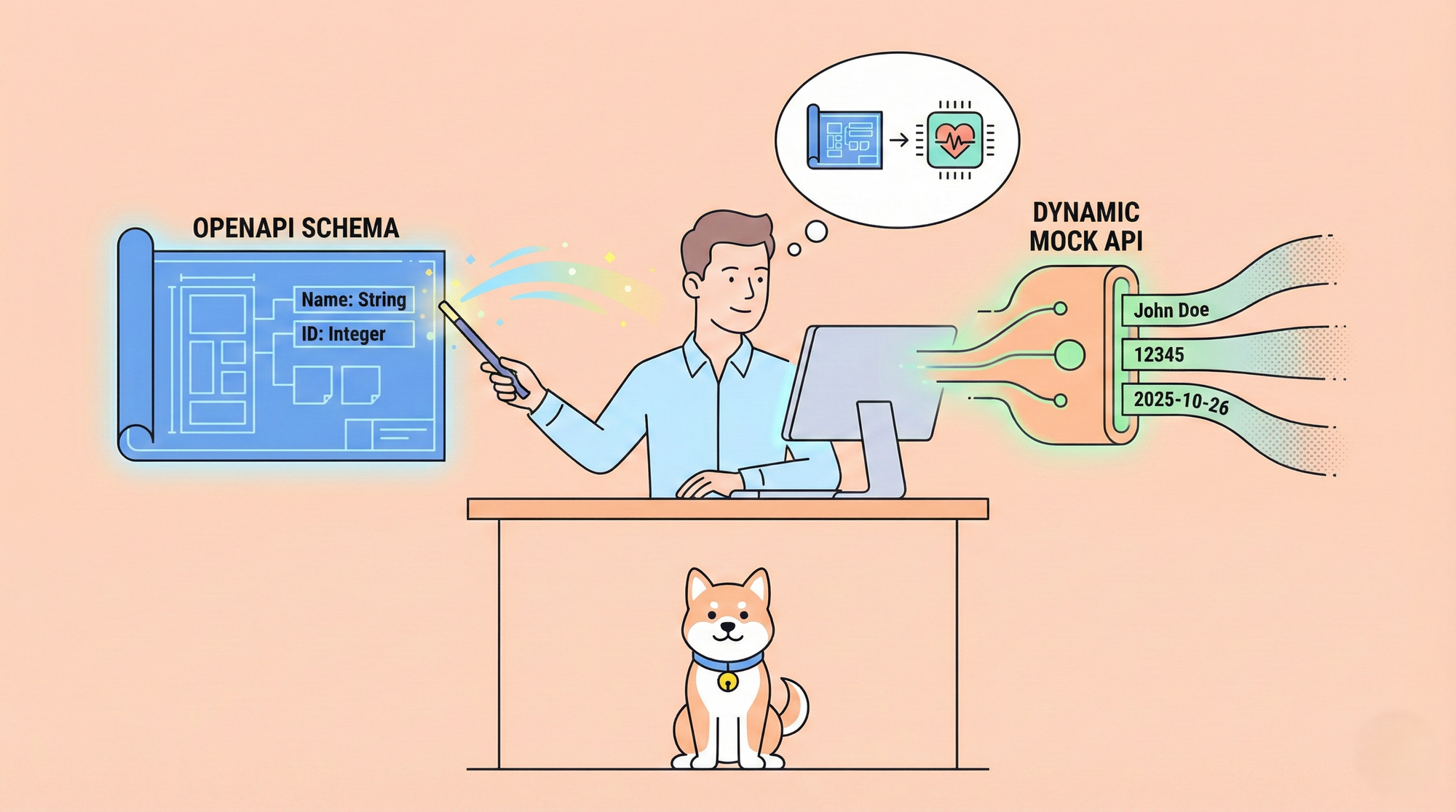In the dynamic world of web development, mastering API communication is a crucial skill for developers. One powerful tool that simplifies this process is cURL. In this article, we'll explore the fundamentals of using cURL to send API requests, providing a step-by-step guide for beginners.
From constructing basic requests to handling authentication and understanding response data, this tutorial aims to demystify cURL and empower developers to seamlessly interact with APIs in their projects.
What is cURL?
cURL (Client for URLs) is a command-line tool and library for transferring data with URLs. It is widely used for making HTTP requests to interact with web services, APIs, and other online resources. curl supports various protocols, including HTTP, HTTPS, FTP, FTPS, SCP, SFTP, LDAP, etc.
It issues commands in a terminal or command prompt, allowing users to send and receive data, set custom headers, perform redirects, and other operations related to data transfer over the internet. cURL is popular due to its simple-to-use interface, cross-platform compatibility, and scripting capabilities. This makes it a valuable tool for developers and networkers as they can perform tasks in a command-line environment.
Key features of cURL
cURL is used for several reasons in the world of web development.
- Command Line Interface: Offers a user-friendly command-line interface for direct interaction with web services and APIs from the terminal or command prompt.
- Cross-platform Compatibility: Works seamlessly on Linux, macOS, and Windows, ensuring consistent usage across different operating systems.
- Versatility: Supports a wide range of protocols, making it a versatile tool for interacting with various services.
- Scripting: Scriptable for integration into scripts and automation workflows, beneficial for API testing, task automation, and integration with other tools.
- HTTP Request Customization: Allows users to customize HTTP requests, including setting headers, specifying request methods, handling cookies, providing essential control for debugging, testing, and API interactions.
- Data Transfer: Capable of handling diverse data transfers, including file downloads and uploads, extending its utility beyond basic API interactions.
- Redirects: Automatically follows redirects, simplifying interactions with services that may return redirect responses.
- Debugging and Testing: Widely used for debugging and testing, enabling quick checks on API endpoint reachability, inspection of response headers and bodies, and verification of expected data.

What is Apidog?
Apidog is a versatile API integration platform that simplifies API testing, debugging, design, mocking, and documentation processes. With a user-friendly interface and a rich set of tools, Apidog enhances collaboration within teams working on various projects. It optimizes API testing, allowing for more thorough evaluations, and facilitates the creation of JSON/XML schemas for test results and responses.

Among its features, Apidog excels in documenting API responses and results, offering customizable layouts for more presentable documentation. The platform also boasts user-friendly API testing tools, enabling the visual addition of assertions and the creation of testing branches.
Collaborative efforts are streamlined through the option to share and work on projects with team members, simplifying the process of handling group APIs. Additionally, Apidog aids in monitoring API activity, and its mocking capabilities eliminate the need for scripting, providing a more efficient development experience.
How to Use cURL API in Apidog?
There are many packet capture tools available online to capture curl requests. These tools include Chrome, Charles, and Fiddler into Apidog in cURL format. This helps in quickly replicating API requests for testing and debugging within Apidog. Let us discuss in detail how you can use each packet capture tool.
Use Packet Capture Tools to Capture cURL Requests
Chrome
- Open the developer tools by navigating to the three dots in the Chrome browser. Select the “More Tools” option and click “Developer tools”.
- Capture the network packets by interacting with the web application or service of interest.
- Right-click on the respective API request, choose “Copy,” and then select “Copy as curl”.

Charles
- Instead of using Chrome, use Charles (a web debugging proxy application) to capture the packets of the API request.
- Right-click on the request and copy it as curl.

Fiddler
- You can choose to use Fiddler to capture the packets.
- Navigate to the top left menu, follow File -> Export Sessions -> Selected Sessions, select curl script, and save it as a .bat file.
- Use a text editor to open the .bat file and copy its contents.
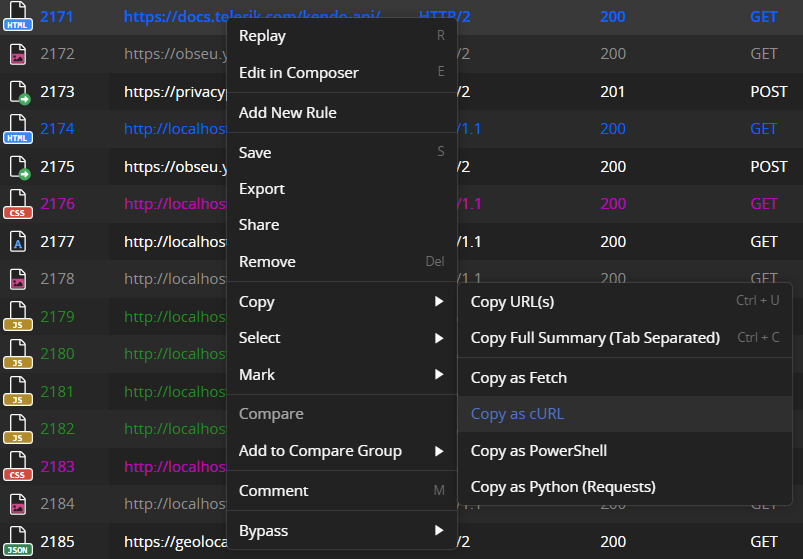
Import Fetched Data in Apidog(A Step-by-Step Guide)
Now that you have captured the data, it is time to capture it in Apidog. The steps of doing this are simple.
- Bring your cursor to the + icon next to the search bar. Choose the option “Import cURL”.
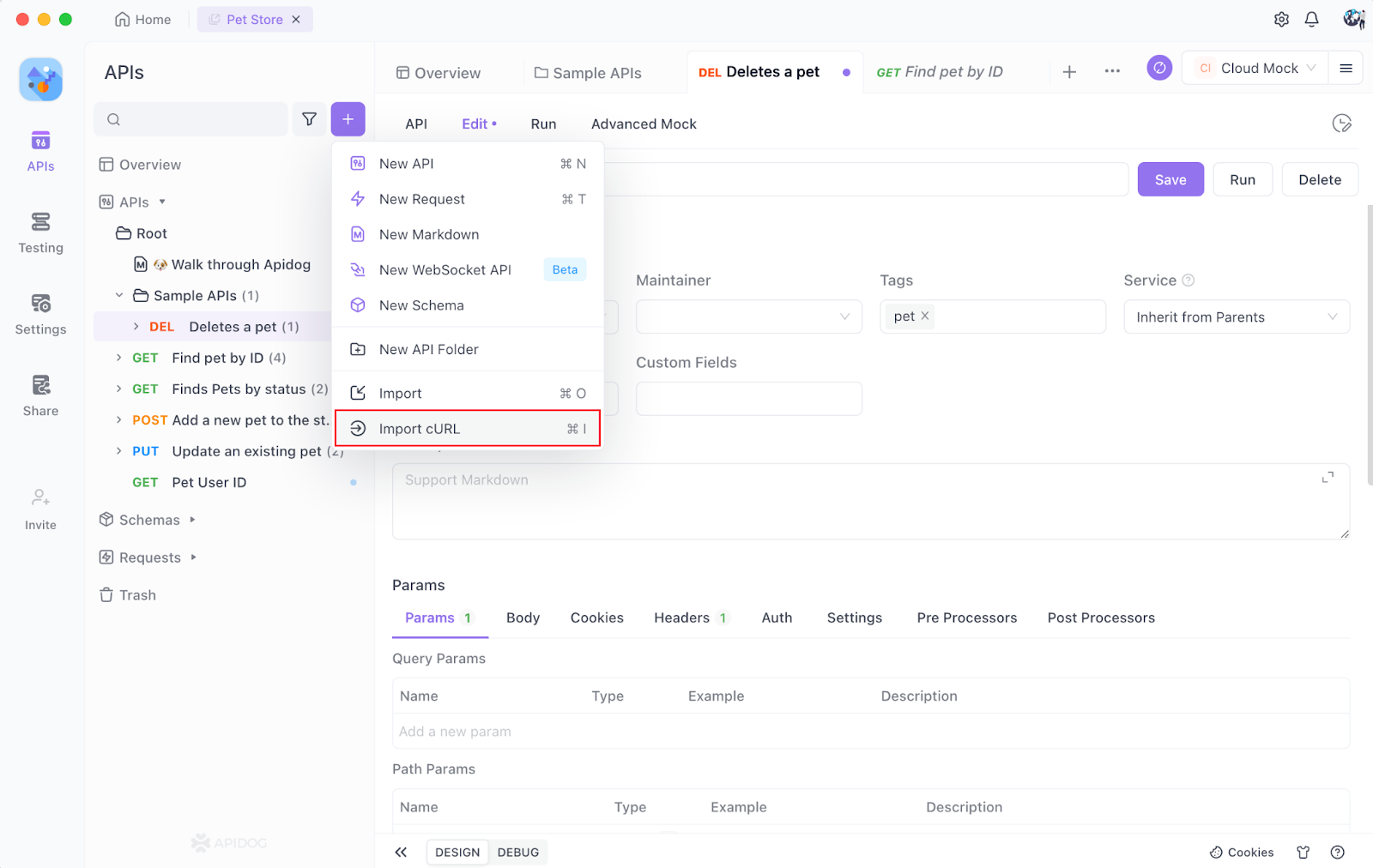
2. A window will open up. You can paste cURL Command or the curl format data into the box captured from the packet capture tool. After pasting the data, click on OK.

3. After clicking the OK button, you will see that the captured data has been copied to the following quick debugging API.
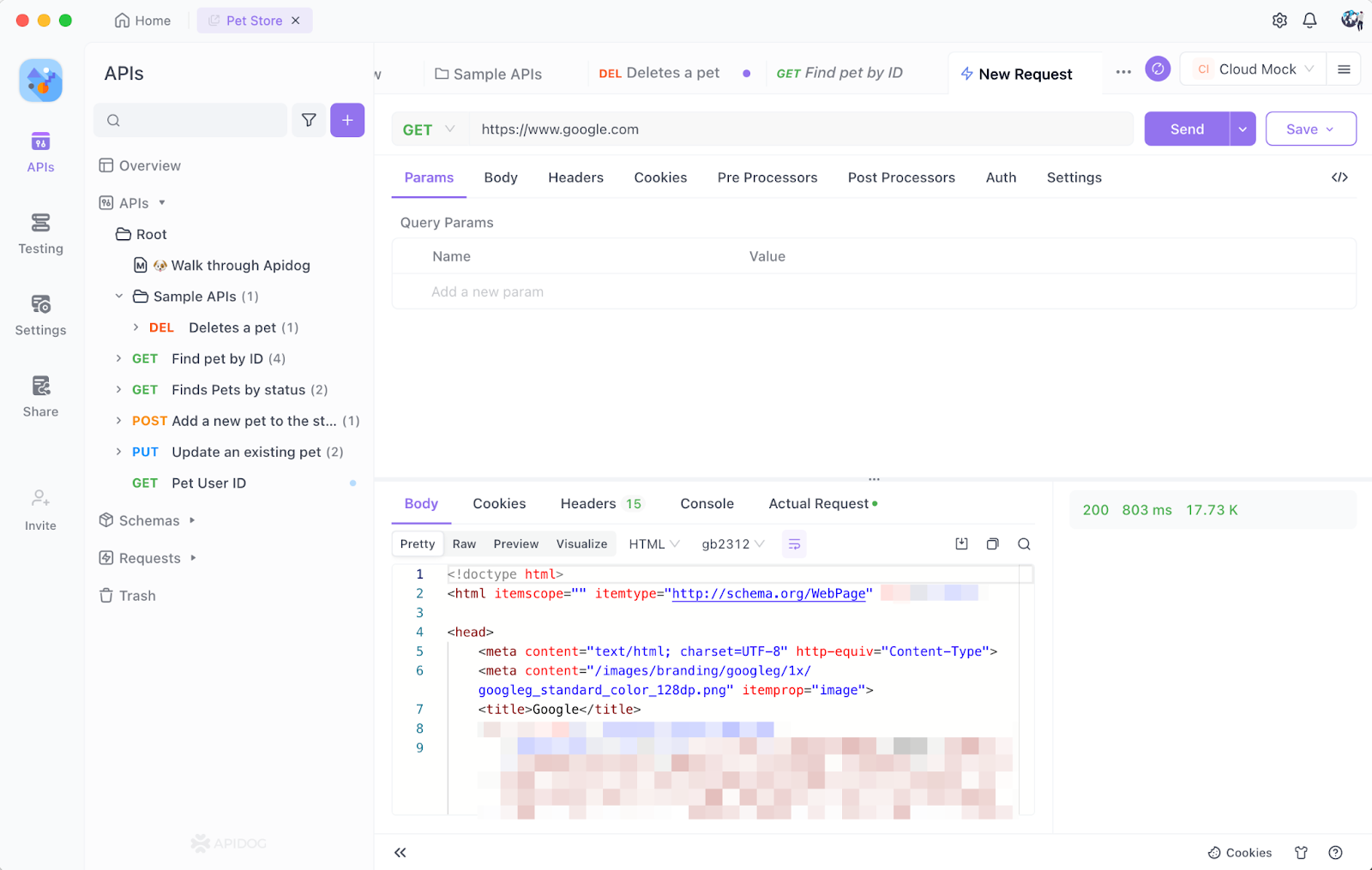
4. You can use the shortcut for debugging to debug the API directly.
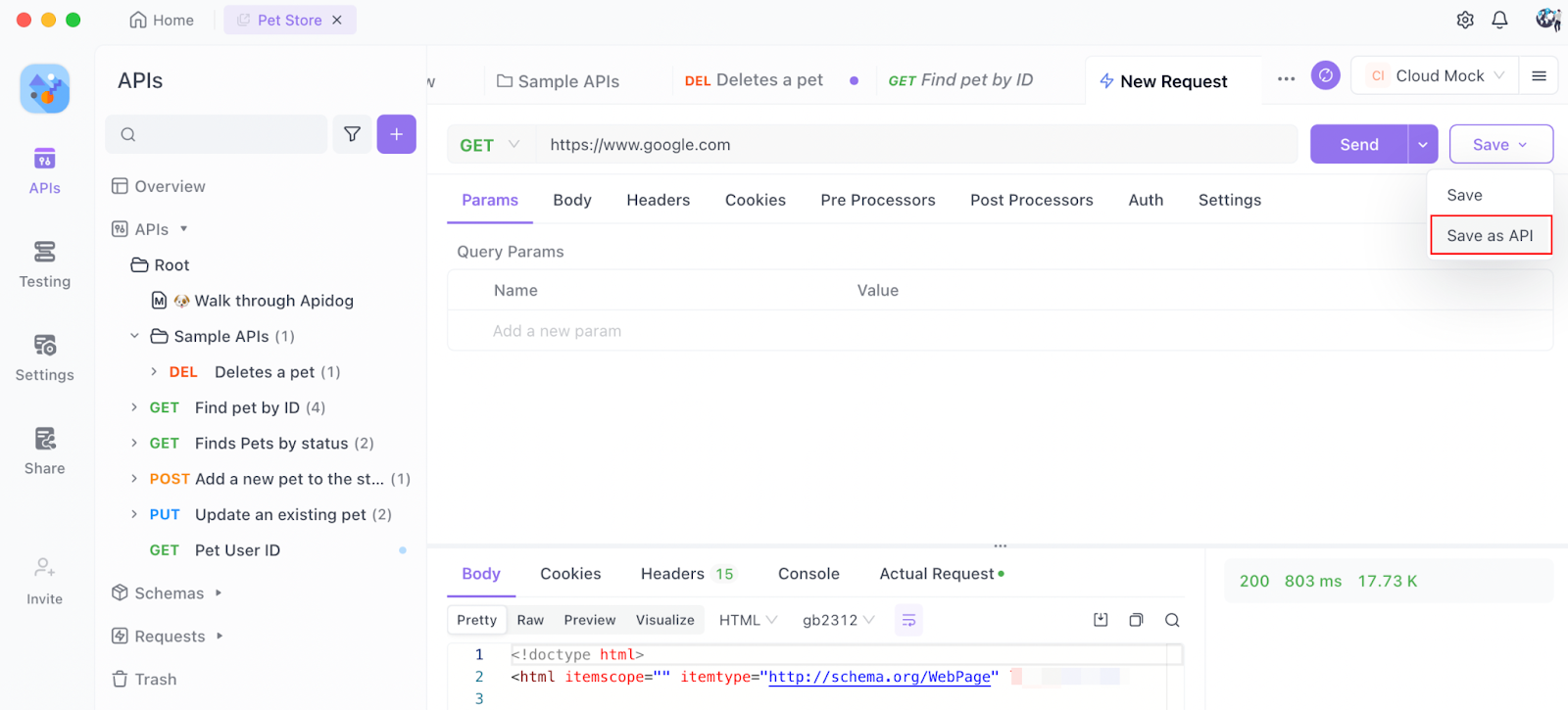
5. Click the "save" button to save the imported data as an API within Apidog for further testing and debugging.
Conclusion
In conclusion, curl integrated with Apidog provides a versatile experience for web developers. The seamless merger of curl's command-line functionality with Apidog's collaborative platform enhances the API lifecycle. Apidog's graphical interface simplifies the integration of existing curl commands, catering to developers with various expertise levels.
The structured environment enables the design, documentation, and automation of APIs cohesively, fostering organization and clarity throughout the development process. The platform's error-handling mechanisms and automation settings contribute to a more robust testing framework, ensuring the reliability of API interactions. The flexibility provided by Apidog allows users to configure automation parameters and adapt the platform to specific project requirements.


